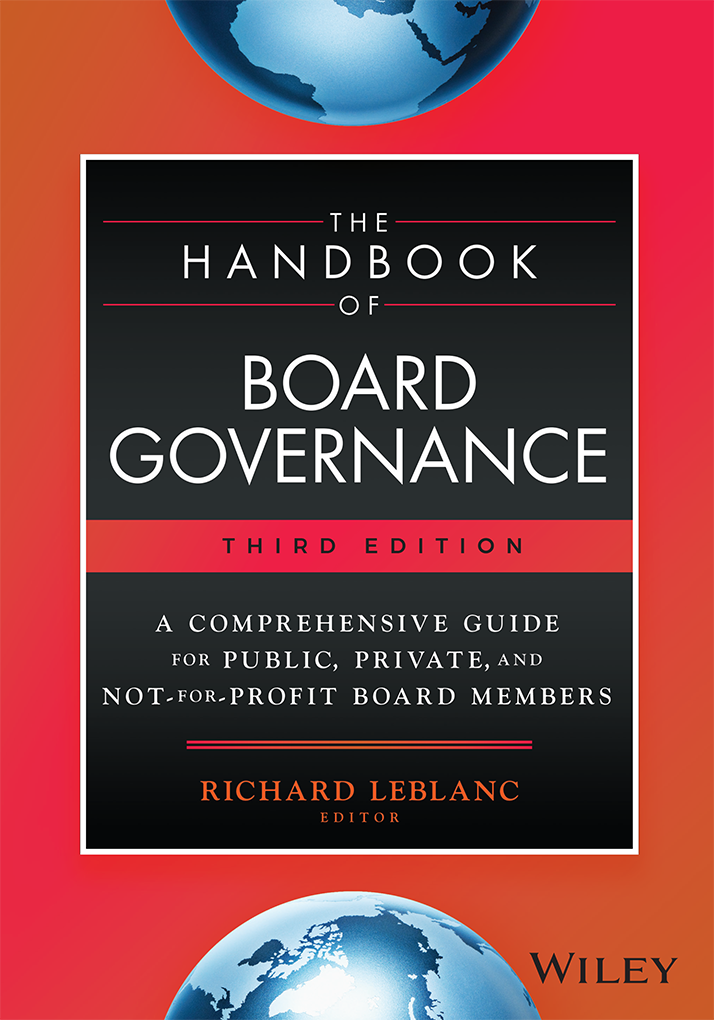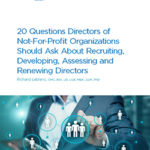There are myths and vested interests in the movement towards boardroom diversity now underway in several countries.
In this first of two blog posts, I consider the “traps” and embedded myths. In the second blog post to follow, in about a week’s time, I will propose solutions.
Here are the eight “traps” as I call them.
1. The “Defining diversity downward” trap
“Diversity” itself as a word is used to shape the debate. Australia has a succinct definition: “‘Diversity’ includes gender, age, ethnicity and cultural background.” If diversity is undefined by a regulator (such as in the US), or there is inadequate guidance provided to companies, then companies can define diversity to suit their own agendas, such as diversity of “perspective” or “training” or “educational background.” This leads to the unintended consequence of a board of almost all white males claiming itself to be diverse when it is not. To drive this point home, I usually post a cartoon of white males sitting around a board table stating that they believe they are diverse because they attended different private schools.
“Moving the Needle,” which is the subtitle for the diversity debate favored by a few groups, is another example suggesting minimalist change.
“Competencies” and “attributes” (or qualifications for directors) also need to be defined and disclosed more fully, on a director-by-director basis, because these criteria for director selection have implications for the diversity movement. “CEO,” for example, is not a competency. (See the “We want a CEO” Trap below.)
2. The “Business case” trap
“Show me the business case,” opponents to diversity argue, and proponents attempt to advance. The fact is that peer-reviewed empirical evidence is mixed in the effect that adding women to boards has upon corporate financial performance, as is the effect of boards themselves upon financial performance. Engaging in this debate is a distracting non-winning proposition. Perhaps the business case for men sitting on boards should also be established. The case for diversifying boards should be based on the effect on debate and decision-making within the boardroom, and on the full use of available talent and equity arguments (read: it is the right thing to do), not on downstream financial outputs.
3. The “Be careful” trap
When women directors are advanced, a response received is “Be careful, as we need qualified directors” (or words carefully spoken or written to this effect). This assertion lacks any empirical support whatsoever. It was offered in Quebec when the Premiere mandated that women must receive parity on Quebec boards and the cultural make up must match that of communities in which the company operates. Proponents of this myth should bear the burden of establishing how women or minority directors are not “qualified” to sit on boards, and indeed what it means to be “qualified” to sit on a board.
When visible minorities as directors are advanced, such as African, Hispanic/Latinos and Asian Americans (whose proportion on boards are in the 1-3% range depending on the survey), the other “be careful” argument I receive is, to use the words of an Assistant Secretary of a large US company “corporate boards should not be designed to be all things to all people. It’s not necessarily in the best interest of a company to try to make the board look like the General Assembly of the United Nations, the U.S. Congress, or U.S. Supreme Court.”
My response to arguments like the above has been: “Listen, the numbers have flat-lined for women and minorities at 15-16% and 1-3% respectively for some time, so if and when boards look like the UN or we have too many women (which will likely never occur in my lifetime), then we can talk about hypothetical arguments. Until then, let’s confine ourselves to the evidence and the here-and-now. And, having multi-culturally diverse boards looking more like communities and emerging markets is especially important if a multinational company does business around the world.
4. The “Entrenchment” trap
Stanford researchers content that only 2% of directors who step down are dismissed or not re-elected, out of a total universe of 50,000 directors. In other words, 98% of directors retire voluntarily. This needs to change so there is greater board renewal and turnover. Term limits of nine years are now instituted in the UK, Hong Kong, Singapore and Malaysia. North American regulators should consider the effect that prolonged tenure has on director independence. Director tenure should be based on performance and it should be easier for shareholders to nominate and remove directors. Any board policy restricting entrenchment should not contain “grandfathering” (exempting existing directors) and should be decided by disinterested directors (and preferably shareholders) unaffected by the policy and free from undue influence of other directors or management.
5. The “We want a CEO” trap
The expressed preference for CEO-directors (current or former) is based on a myth unsupported by research that CEOs make better directors. (It may be that CEOs prefer like-minded and sympathetic supporters.) Giving primacy to CEOs also has the effect of excluding diverse directors.
According to a study, 80% of directors believe active CEOs are no better than non-CEO directors. CEOs tend to be stretched, bossy, poor collaborators, and do not listen. Research also supports tenuous advantage of CEO-directors. Also, only 46% of directors believe former CEOs are above average.
“We want a CEO” may be “code” for women or minorities need not apply.
6. The “It’s whom you know” trap
According to course materials I am using in my Harvard corporate governance course this summer, unlike executive recruitment, where interviews occur of a short list of candidates occur prior to making a choice, in director recruitment, candidates are instead ranked (1, 2, 3 and so on), and NOT interviewed. But rather, the first candidate is approached for a board position. The second and third candidates are approached only if the preceding candidate said “no.” There is no clear rationale for this anomalous recruitment practice and it has the unfortunate effect of excluding unknown but highly qualified candidate directors. It forces women into hyper-network mode because no interactive validation of competencies exist or opportunities to meet the nominating committee. This unfortunate practice perpetuates the “it’s whom you know,” mentality towards board directorship, rather than one’s competency and skills. Everyone loses when directorship is based on patronage, favors or nepotism. The board is weaker as a result.
7. The “Prior experience” trap
There is no evidence of which I am aware confirming that first-time directors are less effective than long-serving directors, or the that the latter are more effective. The focus should be on underlying competencies and attributes and track record of accomplishment. See “Traditional benchmarks keep many women off boards…” Governance is a learned sport, just like anything else. And it is not rocket-science. The fact of the matter is that search firms and nominating committees should focus their efforts on validating and assuring competencies and intrinsics necessary to be a good director, such as integrity, leadership, mindset, industry track record, value creation process, shareholder representation and culture of equity ownership, communication, commitment and specific functional skills needed by the board – and not on an arbitrary metric of prior experience that may or may not relate to the above. The sooner this occurs, the better.
8. The “Pipeline” or “Shallow pool” trap
Women have not made it to senior enough levels and the director talent pool is too shallow, is the final myth. Show me the evidence that this is the case. Perhaps boards are not looking hard enough. In my experience, which includes resume and profile assessment of some of the most senior C-suite women in North America, many of these candidates are markedly superior to the lesser-qualified incumbent directors. Perhaps the “pipeline” is full with qualified director candidates, and it is a mindset recruiting issue more than anything. As Deepak Shukla writes, “From my experience, every time I have attempted to start a discussion thread on the Institute of Corporate Directors’ group (mainly comprised of sitting board directors) on the subject of diversity, I have been greeted with a cold shoulder and an utter lack of responses!”
Join my blog next week where I will propose solutions to address the eight traps above, and action that should be taken by shareholders, search firms, nominating committees, industry associations and regulators to propel boardroom diversity into action.












